A seasonal produce guide for the month of February, with tips on how to choose, store and prepare each ingredient! Plus, multiple recipes included for all 8 produce items!
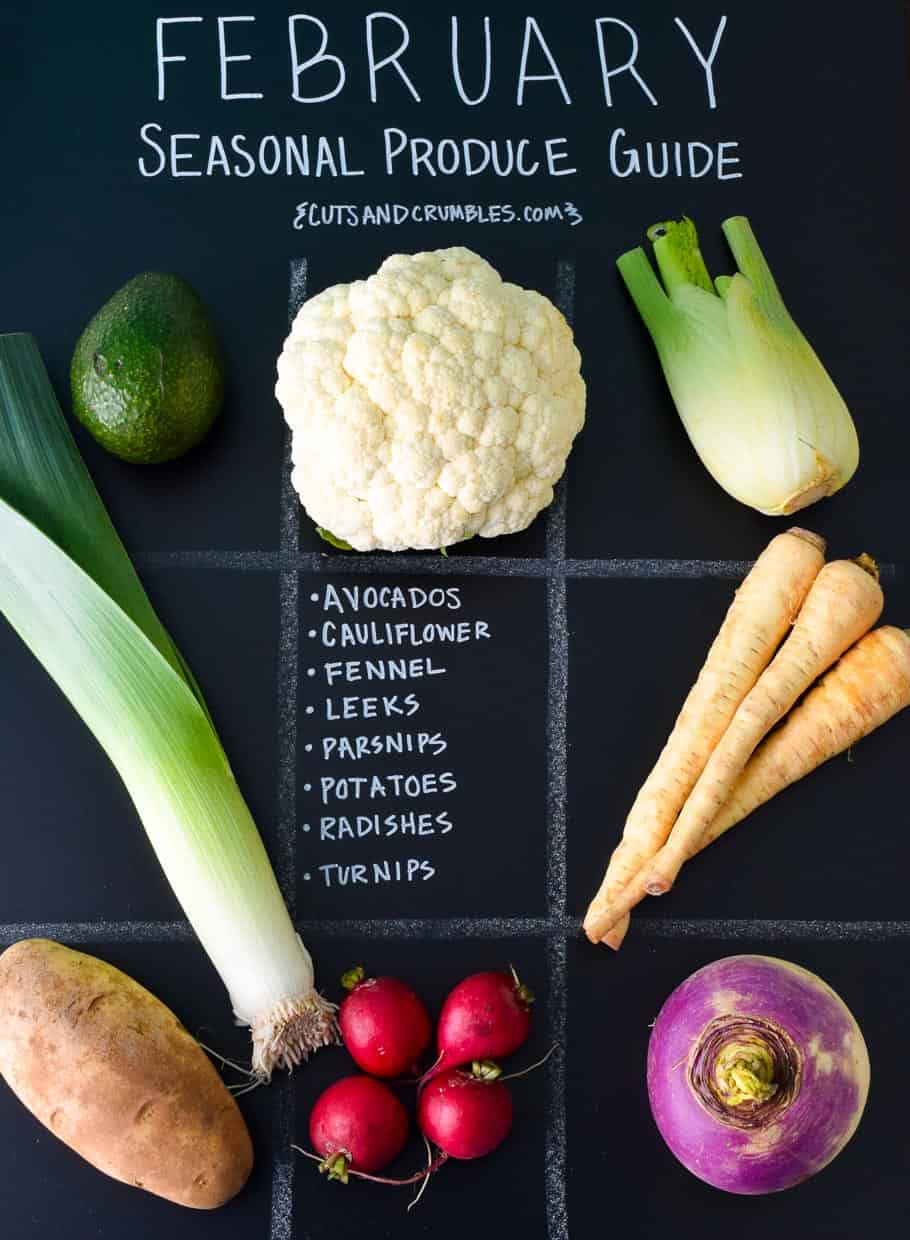
Welcome to February! The weather is still dreary here in Ohio...although, today it is sunny and almost 60 so it feels like basically summer compared to the polar vortex that just rolled through! I'm ready for warm, sunny days, growing my own fresh herbs, and driving to the market with Jeep top off to buy some fresh produce! But we don't have to wait until summer to enjoy fresh produce, there's plenty in season now that we can enjoy!
These monthly seasonal produce guides are designed to help you determine exactly what foods are currently in season, how to choose them and store them, as well as give you some great recipe ideas from fellow food bloggers that incorporate these seasonal finds! There's no need to wait until summer to load up on fresh fruits and veggies, you can totally enjoy them right now!
Eating seasonally will help you save money while increasing the amount of flavor and nutrients you are obtaining from your food. So let's dig into our February Seasonal Produce Guide!
Avocados
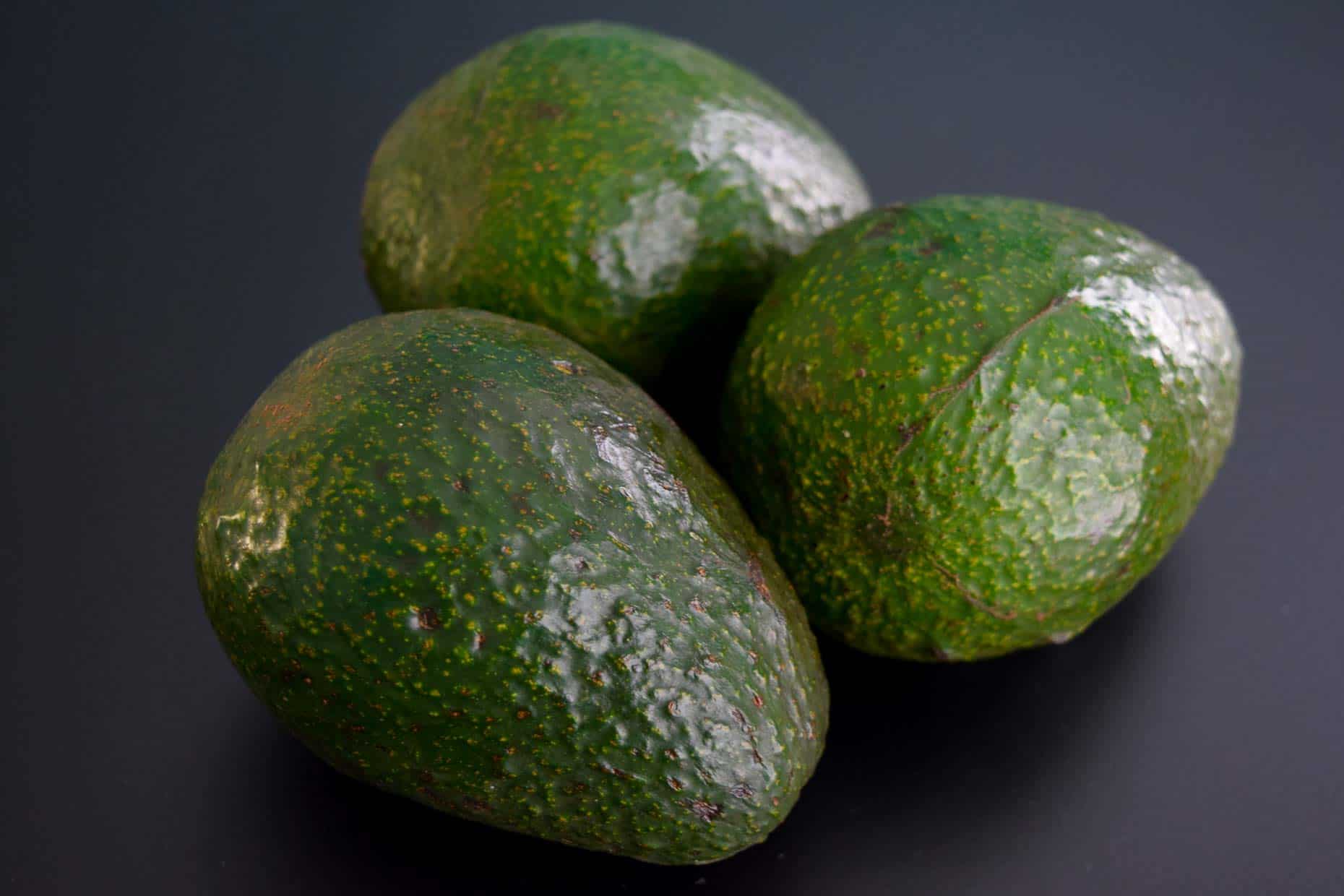 My relationship with avocados is very similar to the lifespan of an avocado. I like them for about 0.1258 seconds and at all other times, it's no good. I'm trying really hard to like them, because, you know, good fats and all, but most the time I just can't.
My relationship with avocados is very similar to the lifespan of an avocado. I like them for about 0.1258 seconds and at all other times, it's no good. I'm trying really hard to like them, because, you know, good fats and all, but most the time I just can't.
Fortunately, I've had a few trips to Mexico where some seriously legit guacamole has convinced me to keep giving avocados another chance, so I'm trying! But I can promise you I won't be eating avocado toast for breakfast anytime soon.
- How to choose them:
- Choosing an avocado depends on when you want to use the avocado. Ripe avocados will be dark, almost black in color. Choose these if you want to use them right away. If you're going to use them in a few days, then choose ones that are more green in color.
- In addition to color, you'll want to press on the avocado to test its ripeness. Ripe avocados should give a little when pressed but shouldn't be soft or mushy (this would be a sign that it is overripe, so you should avoid these ones!) If it is firm and doesn't give at all, then it will need a few days to ripen before use.
- Check the skin to make sure it has no large indents, which would be a sign of bruising.
- Remove the stem of the avocado. Green=good to go. Brown=overripe so don't buy it. If it is black or dark brown then the avocado is likely moldy so don't buy that one either!
- How to store them:
- Store any unripened avocados on your countertop for 4-5 days to ripen. You can also store unripened avocados in a paper bag (out of direct sunlight). You can store them with an apple or a banana for 2-3 days to speed up the ripening process, if necessary. (These fruits release ethylene gas which will speed up the process).
- Store ripened avocadoes whole in the refrigerator for up to 3 days. The cold will help slow down the ripening process. (Although we all know avocados have about 2 second window where they are perfect!)
- If you need to store half of a cut avocado, leave the pit in, squeeze fresh lemon or lime juice over top, then wrap with plastic wrap or place into a sealed container. You can store an avocado in the fridge this way for about 24 hours.
- How to prepare them:
Cauliflower
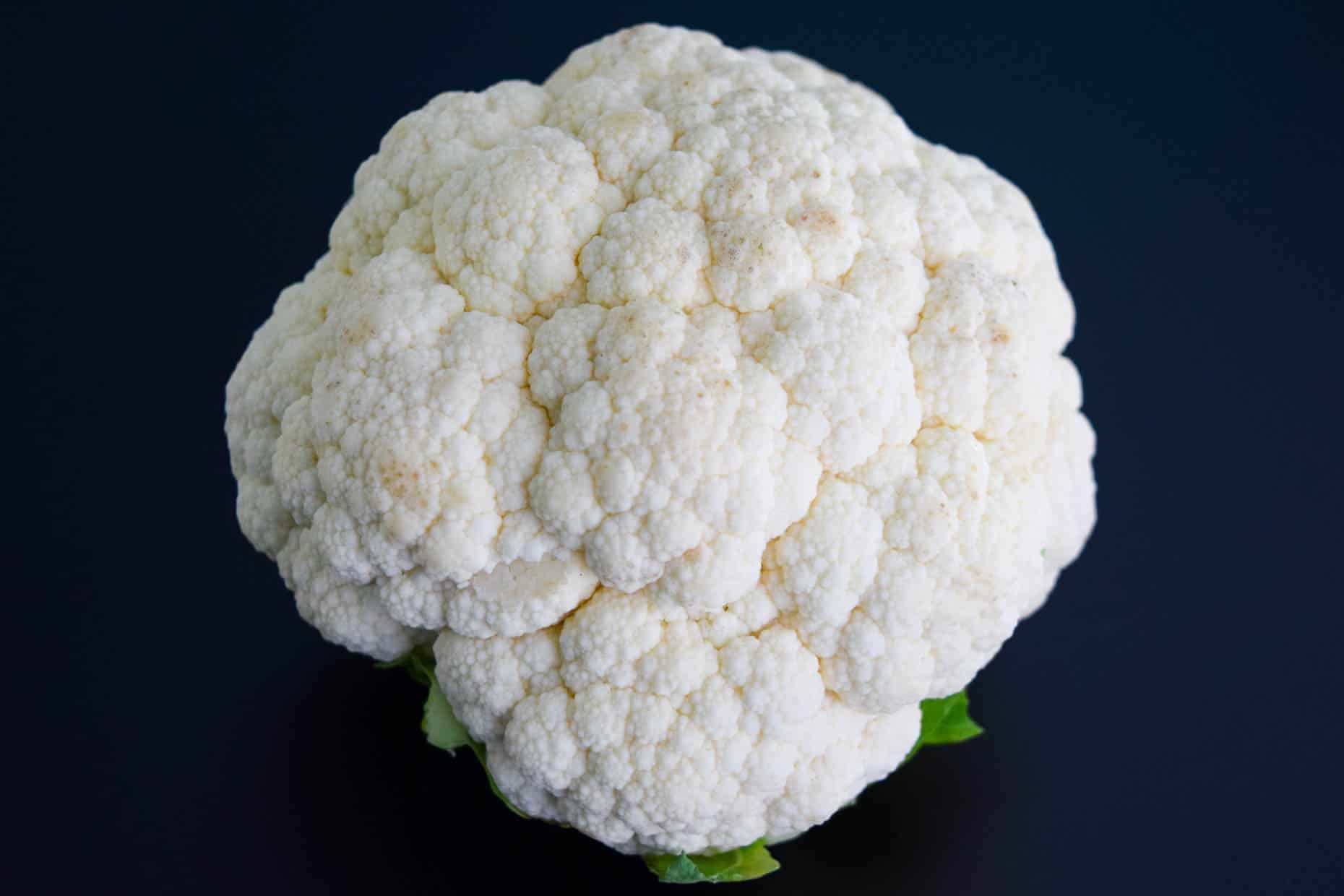 Ah, cauliflower. The great imposter. YOU ARE NOT A POTATO. I just had to get that off my chest. I'm not, not a fan of mashed cauliflower, I'm just a HUGE fan of mashed potatoes. So let's not get things twisted here. In fact, I have a few recipes for mashed cauliflower on my blog and I make them quite frequently!
Ah, cauliflower. The great imposter. YOU ARE NOT A POTATO. I just had to get that off my chest. I'm not, not a fan of mashed cauliflower, I'm just a HUGE fan of mashed potatoes. So let's not get things twisted here. In fact, I have a few recipes for mashed cauliflower on my blog and I make them quite frequently!
This recipe with bacon, caramelized onions and gorgonzola is my all time favorite. And how can you not love something that has bacon and cheese in it? I think cauliflower just gets a bad rap, probably from people like me screaming "YOU ARE NOT A POTATO" at it, but really it's pretty good. Also, cauliflower steaks are now a thing, so I think the world just really hates letting cauliflower be cauliflower.
- How to choose it:
- Choose cauliflower heads that are clean, firm, compact and white or off white in color. Avoid cauliflower that is browned, soft, or has any dark spots.
- Choose a cauliflower head that feels heavy for its size.
- The leaves of the cauliflower should be green and crisp with no signs of yellowing or wilting. Leaves growing within the cauliflower head is fine, just remove them before cooking.
- There should be no smell. If it has a strong odor, it is likely past its prime and will have an unpleasant taste.
- Check the stem to ensure it looks freshly cut and is in good shape.
- How to store it:
- Unwrap your cauliflower from the store packaged plastic wrap, wrap in a paper towel, then transfer to a loosely sealed bag. Store in your refrigerator crisper drawer, stem side up, for 4-7 days.
- Pre-cut florets should be used within 4 days.
- Do not wash the cauliflower until you are ready to use it.
- How to prepare it:
Fennel
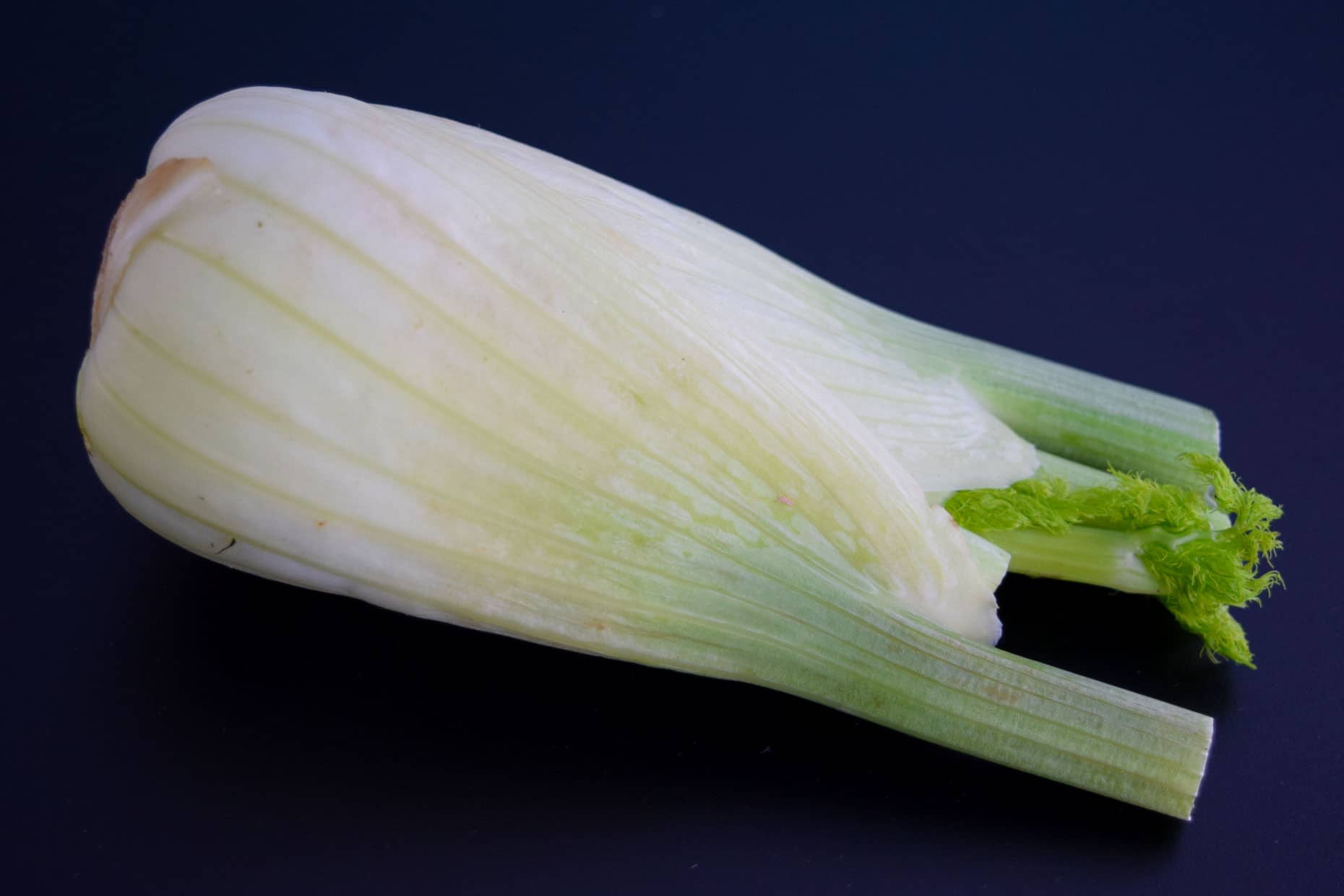 Confession time: I've never bought fennel. Okay well I did once. And it was to photograph this produce guide. And it took the cashier about 5 minutes to find it in the system because I might have been the first person to ever buy it in that store.
Confession time: I've never bought fennel. Okay well I did once. And it was to photograph this produce guide. And it took the cashier about 5 minutes to find it in the system because I might have been the first person to ever buy it in that store.
Also, I actually had to write this guide first so I knew how to even choose fennel. And thank God for other food bloggers because now I have some recipes on hand that I can use for my new found fennel!
- How to choose it:
- Choose fennel that has smooth, white skin and no brown spots. Avoid any bulbs that have moist spots or appear shriveled or dried out.
- Avoid any fennel with bulbs or stalks that have cracks, splits, bruising or discoloration.
- The greens should be fresh looking on long branches. As the fennel sits it will start to wilt and managers will typically trim them, so long branches are indicative of fresh fennel!
- The bulbs should feel heavy for their size. Smaller bulbs will be sweeter and more tender.
- The cut ends of the stalks (fronds) should look fresh and not dried out.
- How to store it:
- Store in a loosely sealed bag in the vegetable crisper for up to a week. It is best when eaten fresh to fully enjoy the flavor.
- The entire thing is edible, but most people utilize the bulb. You can dispose of the stalks (fronds) if you wish, or chop them up to use in salads or as a garnish. The leaves can be used as seasoning in BBQ or for fish. If removing the fronds, leave 2-3 inches above the bulb before storing.
- How to prepare it:
Leeks
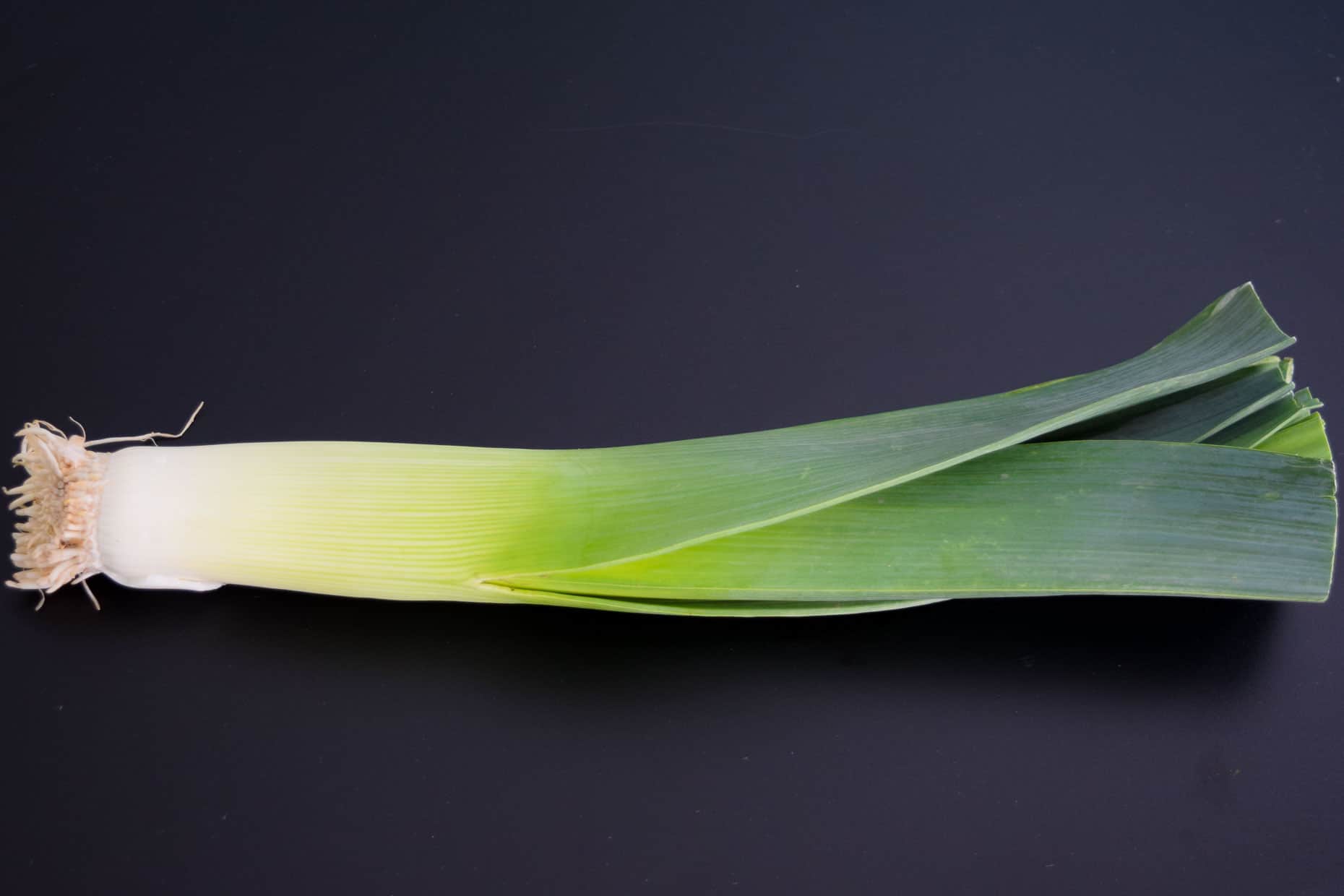 Confession #2: I don't think I've ever bought leeks before. We buy (and grow) scallions all the time, but I never venture into leek land.
Confession #2: I don't think I've ever bought leeks before. We buy (and grow) scallions all the time, but I never venture into leek land.
Maybe my loyalty lies with scallions? Maybe I'm a lazy shopper/cook? Maybe I'm scared of leeks? Maybe it took me until now to realize there was really a difference? (Like I just thought leeks were scallions on steroids and I didn't want those jacked up scallions bullying all my other veggies?) Probably all of the above. But guess what? I've got leeks in my house now so we're cooking with some leeks this week!
- How to choose them:
- Choose leeks with a lot of white and bright green. This area is called the shank and now leeks are my new favorite produce item because I want to shout across the market to Andrew to "GRAB THE LONG SHANK" and watch everyone's response. But seriously, choose the long shank. The dark green area of a leek is tough and unpleasant so you want more white and bright green. More shank.
- Avoid leeks that are yellow, bruised or discolored.
- The shank should be smooth, straight, fresh and crisp. Avoid any that are soft, mushy, cracked or split open.
- Choose smaller leeks that are no more than 1 ½ inches in diameter. Larger leeks will be tough and fibrous and will not soften well when you cook them.
- How to store them:
- Store wrapped in a paper towel in a sealed bag in your refrigerator crisper drawer for up to 2 weeks until ready to use.
- Do not wash or trim before storing.
- How to prepare them:
Parsnips
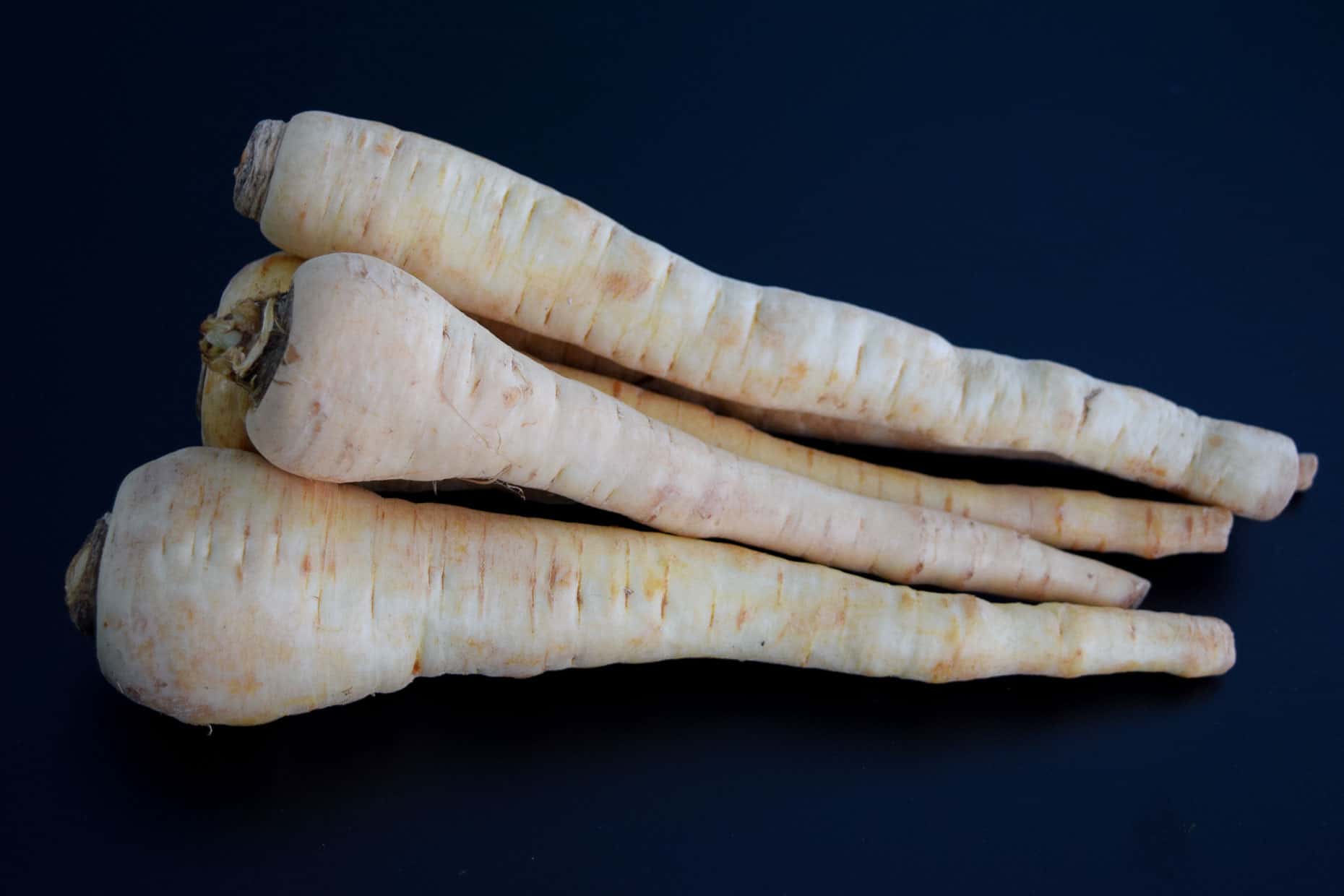 Confession #3. You guessed it. This was my first time buying parsnips. Man, I am learning a lot of new produce this month! I don't know why I never bought parsnips, given the fact that I love carrots so much.
Confession #3. You guessed it. This was my first time buying parsnips. Man, I am learning a lot of new produce this month! I don't know why I never bought parsnips, given the fact that I love carrots so much.
Maybe I just never realized how similar they were? Maybe they just looked boring to me? They just look like super pale, exhausted, overworked, possibly ill, carrots. But I'm excited to try out some new recipes with them! Plus these babies are resilient! They last for up to 3 weeks in the fridge so there's no excuse for not eating healthy this month, guys!
- How to choose them:
- Choose parsnips that are an even yellow or cream, firm and have intact roots.
- Avoid parsnips that are browning or shriveled.
- Choose smaller parsnips as they will be sweeter than the larger, woodier tasting ones. (The more white they are the sweeter they will taste as well!)
- Avoid any parsnips that show any bend or soft spots.
- Fresh parsnips should have a little bit of an herbal scent to them.
- If the tops are still attached, make sure they are fresh and green and not wilted.
- How to store them:
- Store unwashed in a cool, dark place like you would carrots. If the greens are still attached, remove them completely (they will drain moisture from the parsnips), wrap the parsnips in a paper towel, then place in a plastic bag and store in the refrigerator for up to 3 weeks.
- How to prepare them:
Potatoes
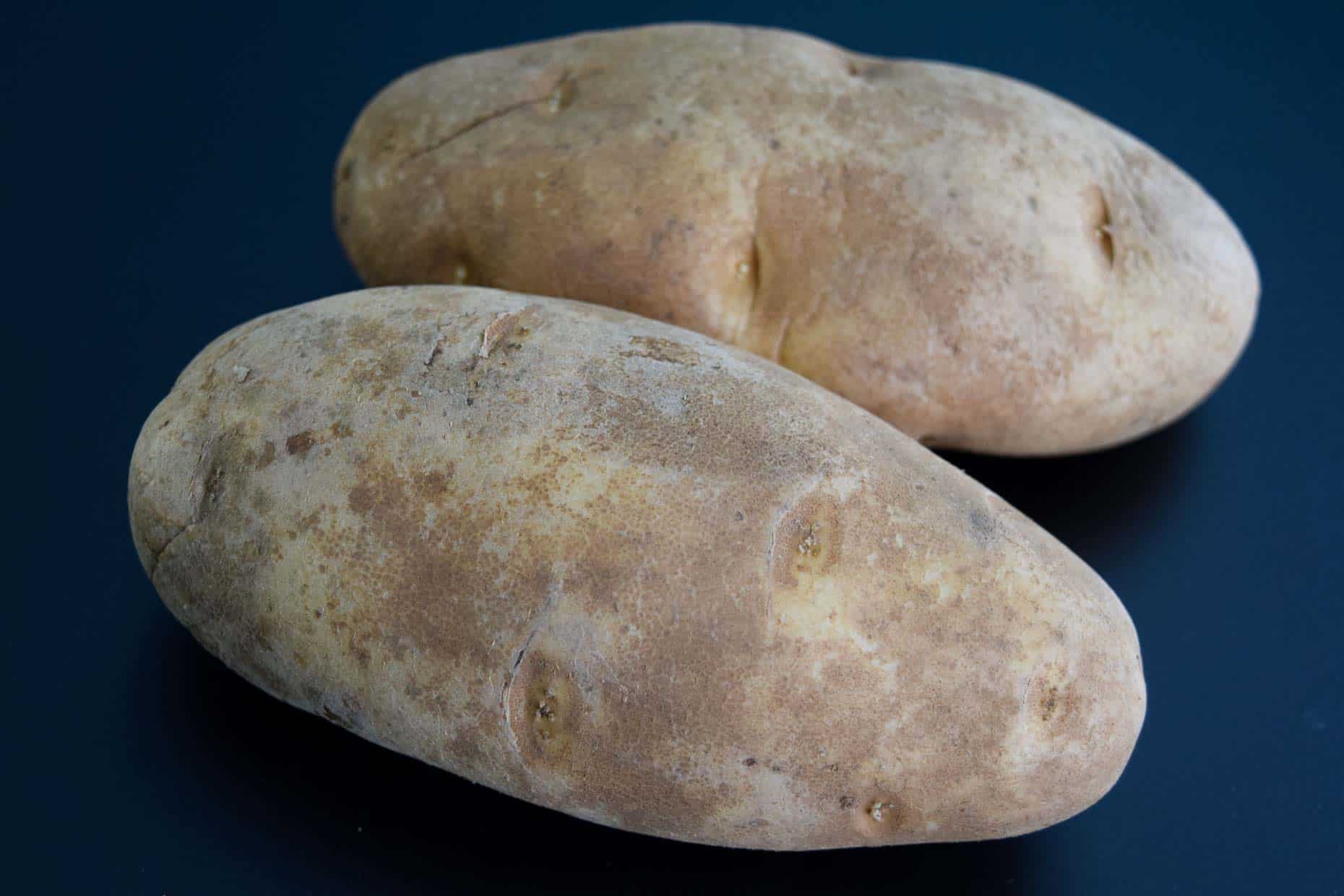 Yaaaas taters!! If they're in season I pretty much have to eat them, right? If you don't like potatoes I don't trust you. Or like you. Unless you're giving me your portion of potatoes in which case I trust you and like you more than anyone I know. I love potatoes in every form. Roasted, mashed, souped, hashed (am I just making up potato prepping words now? I don't know, I'm hungry.)
Yaaaas taters!! If they're in season I pretty much have to eat them, right? If you don't like potatoes I don't trust you. Or like you. Unless you're giving me your portion of potatoes in which case I trust you and like you more than anyone I know. I love potatoes in every form. Roasted, mashed, souped, hashed (am I just making up potato prepping words now? I don't know, I'm hungry.)
- How to choose them:
- Choose potatoes that are firm, clean, smooth and unblemished. Avoid potatoes with any cuts, cracks, dents or gouges where bacteria can get in or mold can grow.
- Avoid potatoes that are growing sprouts unless you plan to eat them within 1-2 days. (And be sure to dig out those eyes before you cook them! #savage)
- Avoid potatoes that have any dark or green spots, or any other signs of bruising.
- Know what potatoes you need for what you're trying to make:
- High starch potatoes are best for dry or oil-based cooking such as baking, roasting and frying. These potatoes will absorb a lot of moisture so they'll fall apart in soups, stews, or during boiling. However, they're good for mashing. High starch potatoes are:
- Idaho, russet, and sweet potatoes
- Medium starch potatoes are considered all-purpose potatoes because they can be used when you're not really sure what type of potato you need. They hold their shape better than the high starch potatoes but still absorb moisture more than the low starch potatoes. This makes them ideal for boiling, baking, frying, roasting, steaming, and using in stews and soups! When in doubt go medium! Medium starch potatoes are:
- Red potatoes, purple potatoes, and kennebec
- Low starch potatoes are waxy so they don't absorb moisture like the high starch potatoes do. This makes them ideal for boiling and steaming for soups, stews, potato salads, and casseroles since they'll hold their shape. Low starch potatoes are:
- Yukon gold, fingerling, and carola
- High starch potatoes are best for dry or oil-based cooking such as baking, roasting and frying. These potatoes will absorb a lot of moisture so they'll fall apart in soups, stews, or during boiling. However, they're good for mashing. High starch potatoes are:
- How to store them:
- Store in an open paper bag or a paper bag with holes in it.
- Do not store in a plastic bag as this will trap moisture and promote rotting.
- Store in a cool dark place such as your pantry, in a closet or in your basement. Do not refrigerate, as the cold will cause the starch to convert to sugar which will change the taste of the potato.
- Potatoes stored at room temperature will last about 1-2 weeks, potatoes stored at 45-50 degrees F will last for 2-3 months.
- How to prepare them:
Radishes
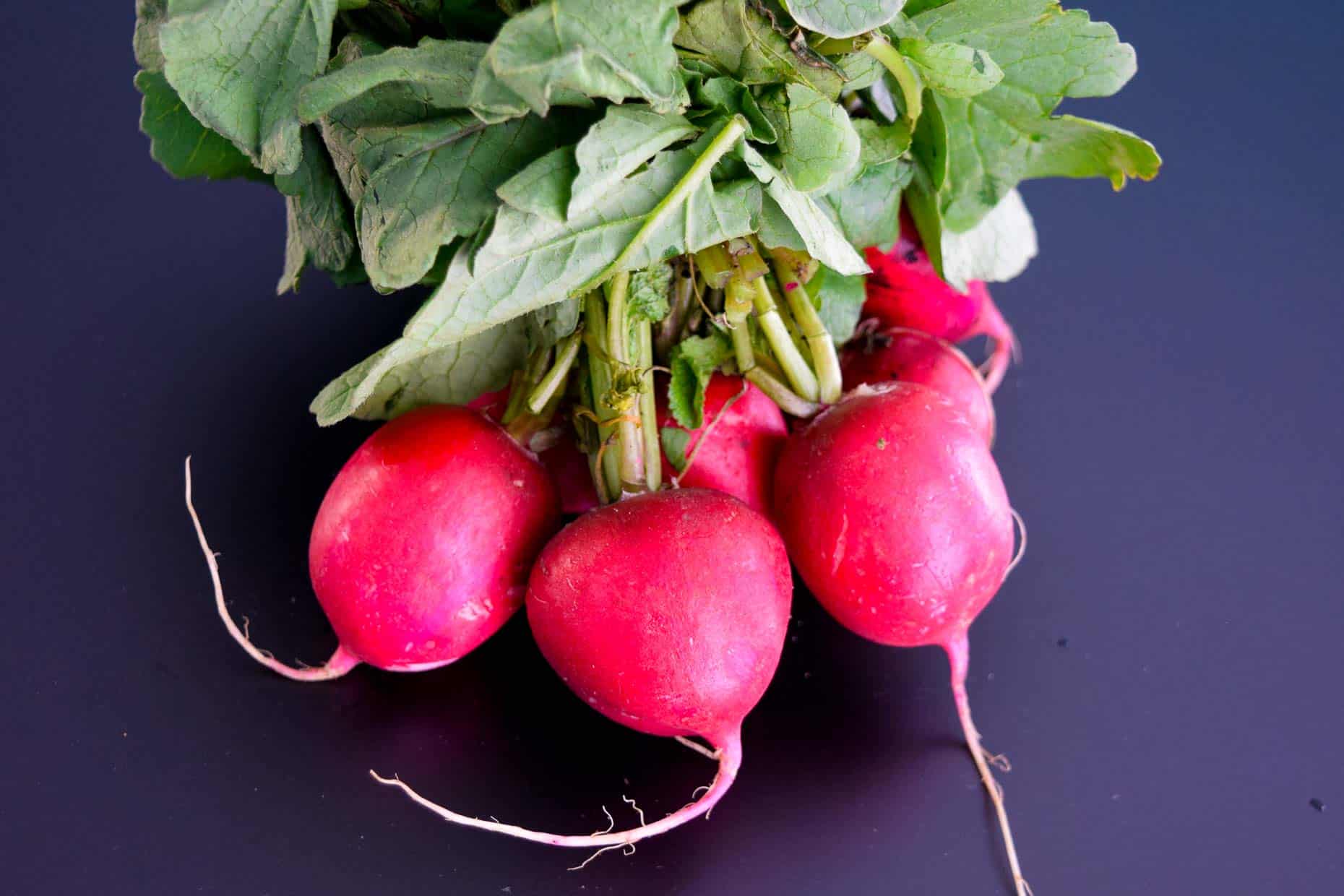 Andrew loves radishes. He eats them in salads. He roasts them. He probably eats them like tiny apples when I'm not looking. I can't be sure. Me? I find them to be pretty boring. Much like the salads he puts them in. Meh. Roasted I guess they're okay. Personally, I'd rather house some brussels sprouts, and.....sorry....I'm doing a terrible job of talking up one of our produce items this month! Back to the RADISHES.
Andrew loves radishes. He eats them in salads. He roasts them. He probably eats them like tiny apples when I'm not looking. I can't be sure. Me? I find them to be pretty boring. Much like the salads he puts them in. Meh. Roasted I guess they're okay. Personally, I'd rather house some brussels sprouts, and.....sorry....I'm doing a terrible job of talking up one of our produce items this month! Back to the RADISHES.
- How to choose them:
- Choose radishes that are about the size of a ping pong ball for the best taste.
- If the leaves are still attached, make sure they are stiff and bright green. Avoid leaves that are wilted, yellowed, limp or slimy. Make sure the end of the root feels stiff and not wilted.
- Choose the most vibrant of all the radishes, and avoid dull or dark colors. Make sure the skin is smooth and free of cracks, wrinkles or knobs. Avoid radishes with brown or white scars or black spots
- Choose radishes that look heavy for their size. This is an indication that the root is full of juice, meaning it is dense and healthy.
- How to store them:
- Remove any leaves and place into a plastic bag that is sealed but not airtight.
- Refrigerate in crisper drawer for 5 days-2 weeks.
- How to prepare them:
Turnips
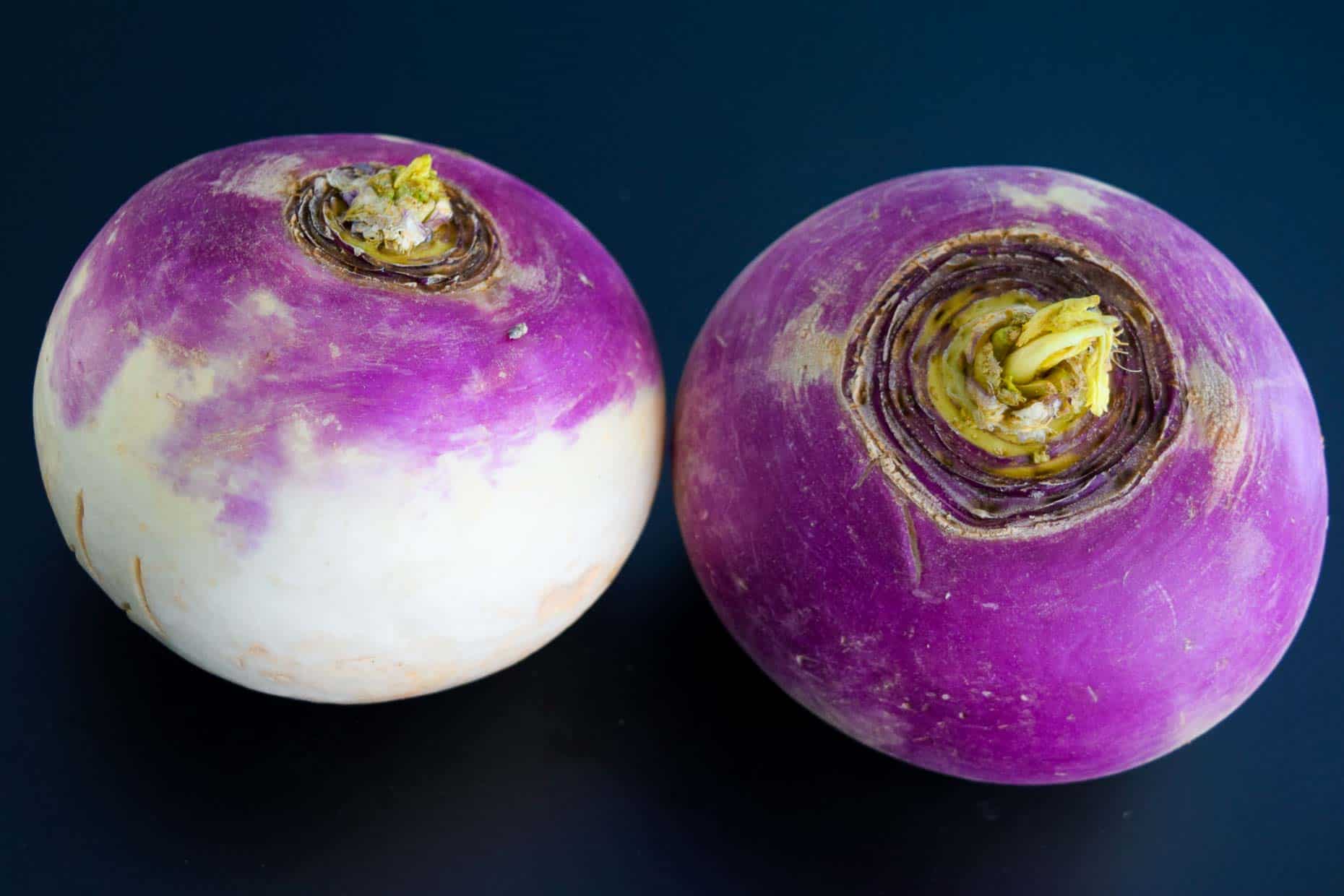 Okay, so at this point in my grocery check out, the cashier was completely stumped by 95% of my purchases. I'm pretty sure I was her nightmare customer that day with 42 bags of mystery vegetables that nobody ever buys. Although I feel I did my job as a food blogger because she did say "I'm learning so much new produce today!"
Okay, so at this point in my grocery check out, the cashier was completely stumped by 95% of my purchases. I'm pretty sure I was her nightmare customer that day with 42 bags of mystery vegetables that nobody ever buys. Although I feel I did my job as a food blogger because she did say "I'm learning so much new produce today!"
I didn't think turnips were that rare, however last week when I bought beets another cashier said "Mmm, love me some turnips" so apparently there's some confusion about the identity of these violet vixens. So let's school ourselves, shall we?
- How to choose them:
- Choose turnips that are heavy for their size (are you guys sensing a theme here? Buy all the heavy produce!)
- Choose brightly colored turnips with creamy bulbs, and a violet ring around the top. If the leaves are still attached, make sure they are green, crisp and not wilted.
- Avoid any turnips with nicks, cuts, or soft spots.
- Choose small turnips, as these will be the youngest and sweetest with the best texture.
- How to store them:
- Store tightly wrapped in the refrigerator for up to 2-3 weeks.
- If the leaves are still attached, remove before storing so they do not draw moisture out of the turnips. Turnip greens can be eaten in salads (young greens), or prepared like cooked spinach (older greens).
- If storing the greens, rinse and store in a plastic bag for 4-5 days.
- How to prepare them:
That's it!! I hope you enjoyed this month's produce guide! Plan ahead by checking out next month's guide!

Emmeline says
I love your seasonal produce guides! Such a great help when trying to eat more in season. And thanks for including my Buffalo Cauliflower Tacos! 😀
cutsandcrumbles says
Thank you, Emmeline! They look amazing! Can’t wait to try them! 🙂